When I’m brought in as akeynote speaker for various conferences and events, I always enjoy talking to the attendees and audience members afterwards. Most of them don’t realize how powerful their memory truly can be, and it’s a joy to be able to teach them a life- changing skill.
One thing that I’ve noticed over the years, however, is that a lot of people don’t necessarily realize that it truly is a skill. Many tend to assume that I was just born this way, with a special mental gift for reciting names, numbers, and so on.
That’s actually not true – my memory skills are the result of practice, not any genetic gift or mutation. My first exposure to memory training came when I was about six or seven years old when I discovered a memory technique in a magic book, and I’ve been hooked ever since.
As much as I strongly advocate children learning these systems, adults can also learn, adapt and apply these systems to help them move ahead in their careers. They can be mastered and applied in a surprisingly short period of time (a topic I’ll cover in a coming post). But, if you really want to give children a head start in life, why not give them a boost with memory training?
I’ve seen myself how well it works. My own daughter was only about four years old when I started teaching her the Chain memory system, used for recalling items in a specific sequence. We played a game where several items were placed on a table, and she had one minute to try to remember all the items. A sheet was placed over the items, then I would take one item away without her seeing, then the sheet was taken away and she had to try to remember which item was missing. By initially “chaining” or “linking” the items together in a crazy story, she simply had to retrace the story in her head until she reached the missing item. This was a fun way to introduce her to the foundation of all memory systems, which is chaining visual images together in a creative way. Those tools to this day help her succeed in school, and will be a big asset to her in her coming career. I teach this same method, and more, to professionals to recall information like speeches, presentations, model numbers, prices and client names.
Here are a few things you should know about teaching memory to kids:
1. Somewhere around four years old is when I started with my daughter. Kids don’t have to be very old to learn the basics of memory improvement; the sooner the better. Arm them as soon as possible in order to take out the laborious rote memorization from the learning process. But it’s also never too late; I have taught people in their seventies!
2. Enhanced memory systems are more than “tricks.” Occasionally, teachers and administrators ask if I am teaching children more than simple tricks and gimmicks. I am, but that’s not even the point: Anything that helps kids be more knowledgeable and confident at school is a good thing, and that can carry over throughout the rest of their life. If they can remember the things they need to, who cares what you call the systems they use? All knowledge is memory; if you can find a fun, creative way for children to both store and retrieve information, then that’s a good thing in my book, no matter what you call it. Once they can do that, then you as a teacher can show them what to do with that knowledge.
3. You don’t have to be a parent to help kids with memory. I have spoken at many teachers’ conferences and other educational events. I’ve seen myself what kind of impact teachers, professors, and administrators can have on the lives of young people. You can help them take the first steps to improve their memory, and improve their lives in the process. Make memorization fun.
To learn more about an incredible memory system for recalling numerical information, which I adapted to help my daughter remember the Multiplication Tables, check out my book: Turbo Tables.
Or, contact my office to find out about my fees and availability as a keynote speaker for your next event.

